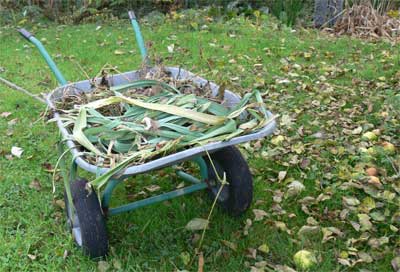Vegging out! A review of vegetables from 2007
By Ruth D’Alessandro, The Wildlife Gardener The Wildlife Gardener can’t sit still for long. Two turkey dinners, half a box of Thornton’s Continental and a repeat of Jason and the Argonauts makes her desperate to get outside and work off those calories in the fresh air. There’s lots to do. It’s almost exactly a year to the day that la famille Wildlife Gardener moved into the Wildlife Garden. Although it may not seem like it from the articles, a lot of hard work went into the vegetable patch. We tried to be self-sufficient, albeit on unfamiliar soil conditions. Vegetables probably got a disproportionately small mention because of the delightful fauna and creepy-crawlies (pond and otherwise) that continually distracted us from our toil. For every ten minutes spent watching newts, I would put in two hours of double digging. But you probably wouldn’t want to read an article about double digging. So I thought it about time I gave my veg a mention. What worked, what didn’t work, and what we’ll try in 2008. Of course the weather was unpredictable this year. Hot and dry in the spring, perfect for early forcing of plants, then dismally wet and barely warm in summer, perfect for rotting things in the ground, spreading blight and breeding slugs.

Successes… Broad beans: from HDRA were delicious, but at only 10 plants there weren’t enough of them and we forgot how much we liked them. Today I have planted 20’Bunyards Exhibition’ and 20’Aquadulce’ seeds in the newly-cleared greenhouse. More will be planted direct in spring. We must not be broad beanless again. Peas: again from HDRA, and so delicious that I served them straight off the plant in their pods raw as a starter. Again, not enough, so we shall sow successionally this year. Dwarf french beans: You know those little packs of green beans from Kenya you get for
- Spurn Spawn! - 26th February, 2014
- Bluebells on wheels: axles of evil? - 2nd February, 2011
- Raising the ba: Wildlife and the Ancient Egyptian Book of the Dead - 8th January, 2011

Aha! I seem to have roused the pro-shallot camp! Tell you what – if I have a bit of space in my alliums bed this year I’ll give them one more go. And, thanks for the tip, Anne, I’ll try roasting them.
Shallots are superior to onions, much sweeter. No contest, especially when roasted!
Mr Wildlife Gardener commented that asparagus peas could be a substitute for okra in Indian dishes. Unfortunately, delicate and subtle flavours are lost on me! It must be your hearty northern soil – I blame our chalk….
Can’t agree with you about the asparagus peas, very bitter when raw, if cooked right they have a delicate and unique flavour – at tleast the ones we grew in Weardale soil did!
Indeed, but at the size I grow them they’re the devil to peel in any useful quantity. They do look pretty in stews.
If you like pea pod canapes you’ll love tiny new broad beans, raw, with serrano ham and a drizzle of Spanish olive oil.
“What’s the point of shallots?”, you say. They are a good substitute for onion, particularly in a creamy dish like carbonara. A regular onion could add bulk and overwhelm this delicate dish with its pungency.
I like the idea of your pea pod aperitif.